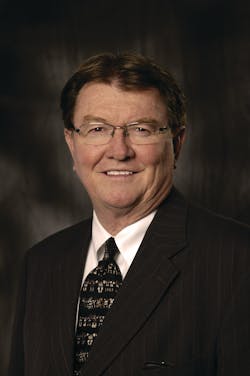Salt Lake City, Utah
John Inglish
General Manager/CEO
Utah Transit Authority
Every transit authority board faces its own set of challenges. A board is a product of everything from statute requirements to past practices and can be as diverse in its practices and goals as it has individual members. In my 33 years at Utah Transit Authority, I’ve seen just about every end of the spectrum in the effectiveness of our agency’s board. Working with board leadership to improve and strengthen our board, I have learned a number of principles that I believe every board can use to become more successful and effective. Many of these principles come from John Carver and his book “Boards That Make a Difference.” Another expert we have frequently consulted is Doug Eadie, who has conducted many seminars on board governance for the American Public Transportation Association.
Perhaps the most important principle is that the board has to know its role. It is critical that the board understand its primary job is to make sure the transit system is managed well, and not to manage the transit system. Every board member needs to recognize the high fiduciary responsibility he or she has toward the people the transit agency has been created to serve. Once the board recognizes that responsibility and develops the necessary rules to safeguard it, it will be much more effective at building a transit agency that best serves that trust. The board should also remember that it manages the organization primarily through one person — the general manager/CEO. As a result, it should hire the very best general manager/CEO it can find. The board’s ability to succeed depends greatly on the person to whom it has entrusted the management of the agency.
Another important principle is that a board should act more like a corporate board and less like a commission. A corporate board meets to discuss, plan and take action for the best interests of the organization. While public opinion is always considered, it is not necessarily the prime focus of the discussion or the motivator behind the action; even something as simple as the meeting room setup can affect how a transit board does business. Years ago, the UTA board would hold its meetings with the members seated across the front of the room, facing the public. The result was that board members tended to address their comments to the public instead of each other. Just changing the arrangement of the room so that board members faced each other helped improve the UTA board’s ability to communicate better and function more effectively as a unit.
Well-defined board rules can also help the board work together more effectively. For example, I have found that it is vital for a board to speak with one voice, even when they may not all agree with a decision that has been made. A standard may be adopted that defines when and to what extent a board member must be publicly supportive of a majority decision even when members may not have voted in support of it. Good rules are essential to helping board members know what is expected of them and how to conduct themselves as they carry out the board’s business.
A board should clearly define its responsibilities and limitations as well as the responsibilities and limitations of the general manager/CEO. This empowers a board to have a say in the decisions that are critical to achieving its vision and mission without getting bogged down in the details of day-to-day operations. Dividing responsibilities into a manageable number of committees (I would recommend no more than three to five) provides adequate opportunities to delve into a desired level of detail without creating too great a burden on individual members.
Finally, it is important for a board to regularly evaluate its performance. An annual meeting focused just on mission and vision is a great opportunity for discussion on how the board is performing in directing the agency to accomplish its goals. Annual training opportunities are also critical to helping board members understand board rules, responsibilities and limitations.
In summary, I believe the key to developing a strong board is for the board to act more like a corporate board. There are many models of board governance that can be as successfully applied to transit agencies as they have been applied in successful companies. The most important first step an agency can take in developing a stronger board is to start talking about how to become better. Then go to work to make it happen.
